It's so frustrating when you want to get started on a sewing project and you find yourself falling at the first hurdle: you’re having trouble threading your needle!
If your thread seems to have a mind of its own and you’re struggling to know what to do with it then never fear, there are plenty of simple tricks that can help you on your sewing journey. These helpful tips will show you how to thread a needle by hand and how to thread a sewing machine needle. You'll be able to get on with your next sewing project in no time!
New to sewing? Check out our best sewing machine for beginners, sewing kits for beginners, sewing for beginners and how to use a sewing machine guides.
Looking for something to watch while you sew? Check out our guides to The Great British Sewing Bee, The Great Pottery Throw Down and Interior Design Masters.
Read on to learn how to thread a needle…
9 ways to thread a needle
Make sure you have good lighting and that you're using the correct needle size
Being able to see your needle clearly will help considerably when trying to thread it. Using an angled lamp will enable you to see the eye of the needle properly. If your sewing machine has a built-in light, make sure it’s switched on. Make sure your needle has an eye big enough for the thread you wish to use. Most needle packs have a variety of sizes included so choose a needle with a generous-sized eye. This will avoid putting any strain on the thread once it’s through the needle which can cause it to shred or snap.
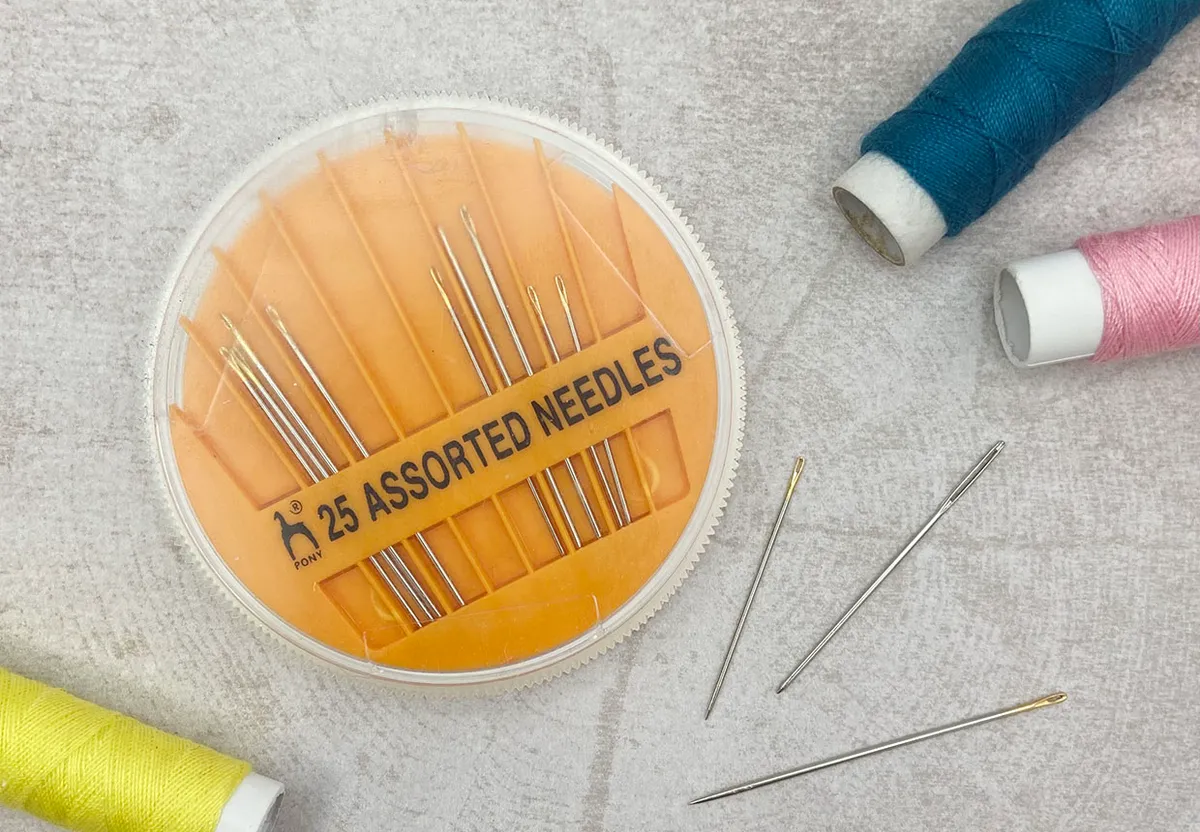
Cut with sharp scissors at an angle
Cutting the thread with a small sharp pair of small scissors will ensure that there won’t be any shredding or fuzzy edges. This will make it more tricky to push through the eye. Cutting through the thread at a 45 degree angle also helps to achieve a smooth end – this works especially well with slightly thicker threads. If your sewing machine has a thread cutter then use that to cut your thread before attempting to thread the needle. These are tiny fixed blades so they’re generally very sharp and perfect to achieve a neat cut.
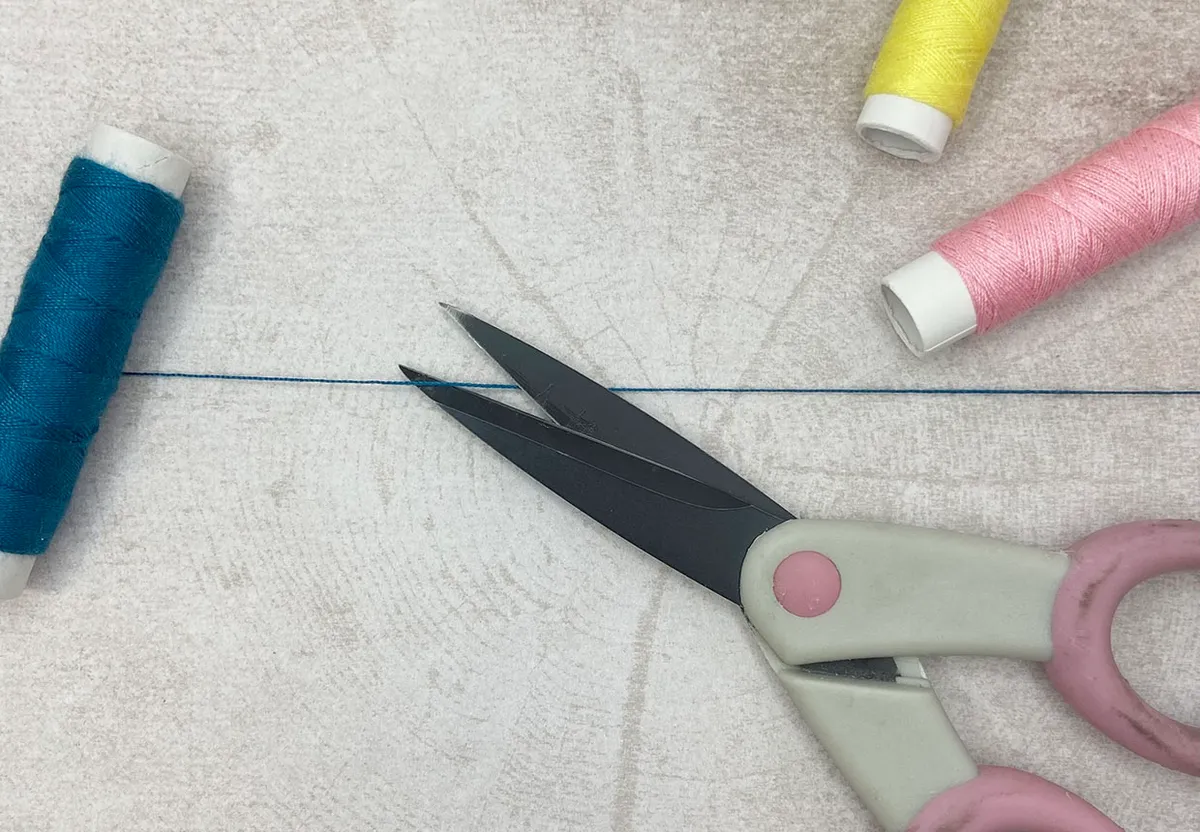
Place something white behind the needle
Placing a piece of white scrap card or fabric behind the needle will create a contrast to enable you to see the eye much clearer. Tuck something white into your sewing kit so it’s always on-hand when required.
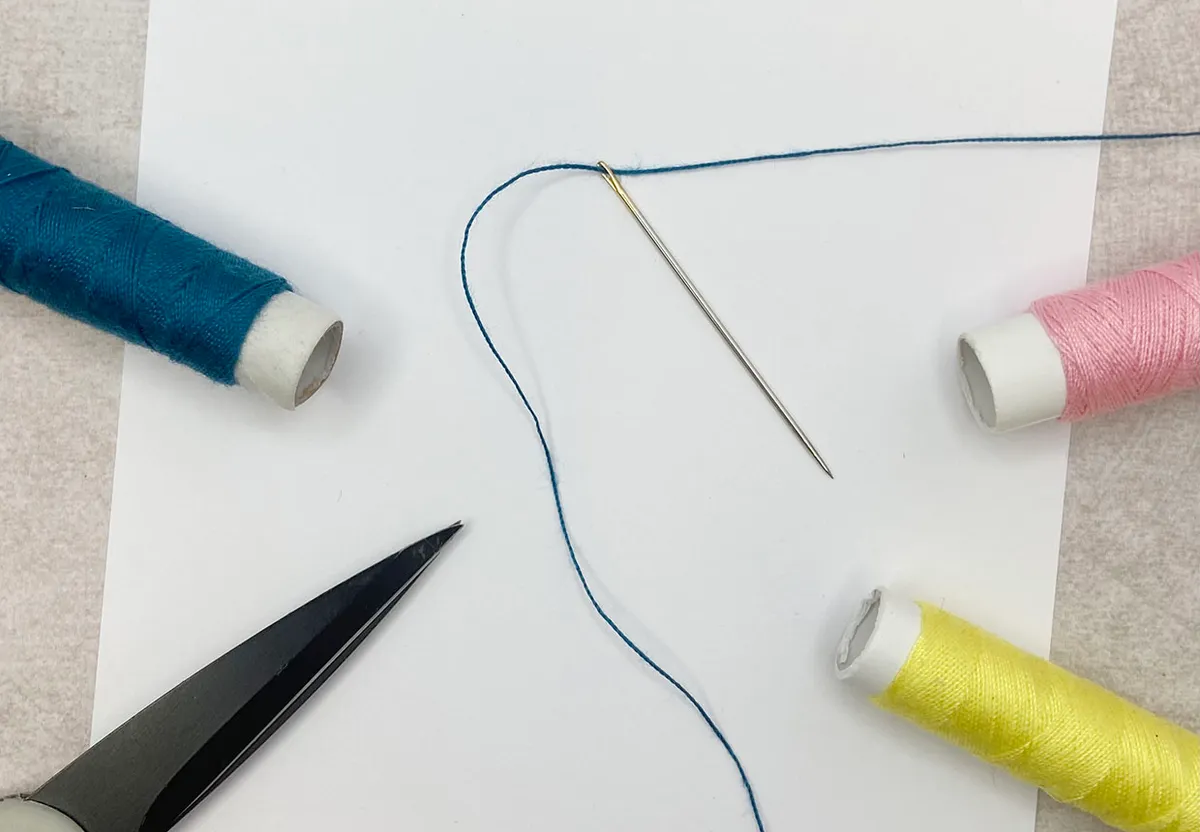
Add a dab of white paint to your sewing machine foot holder
Putting something white behind the needle also works when you're trying to thread a sewing machine needle too. Simply dab a small amount of white acrylic paint to the part of the foot holder that sits directly behind the needle and leave to dry.
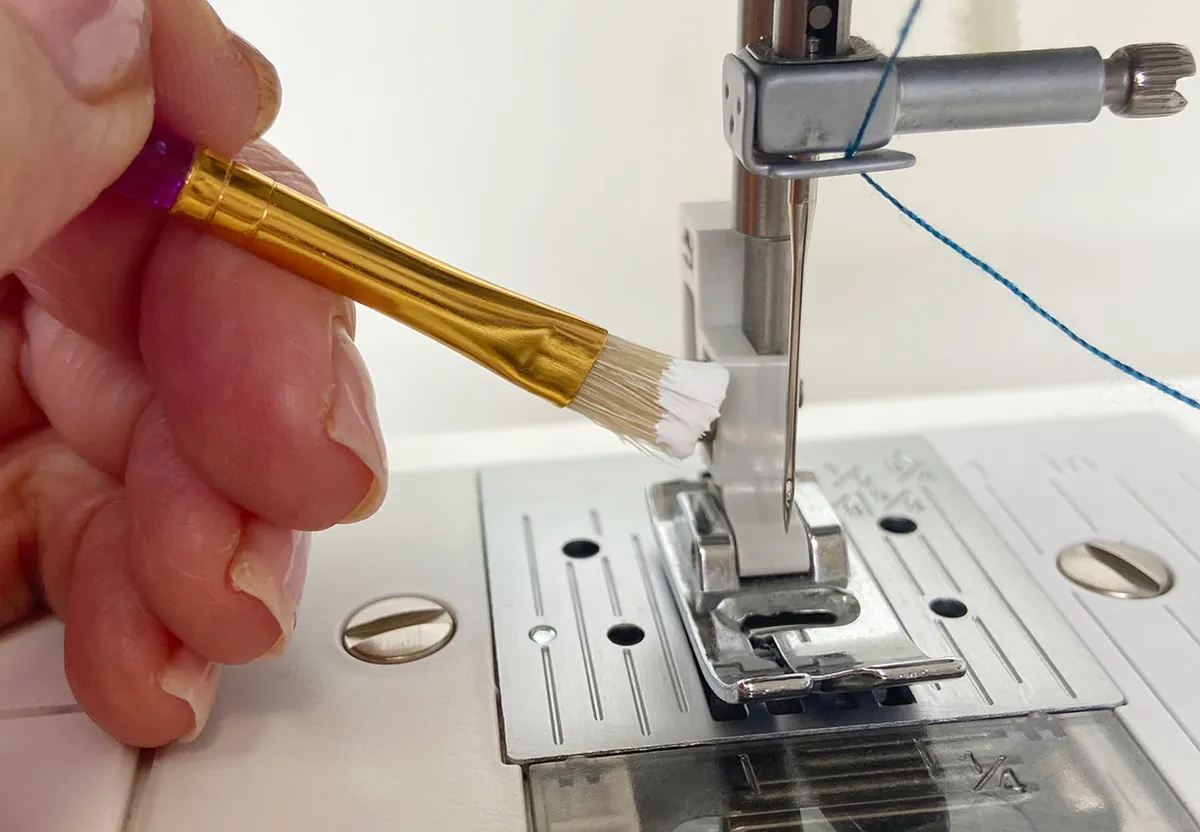
Stiffen the end of the thread
If you’re finding your thread very limp and difficult to control then stiffening the end will certainly help. You can run the end of the thread through beeswax to stiffen or if you don’t have any, then a dab or water or saliva will also work well. It’s best not to use beeswax on sewing machine thread as it could get into the mechanism.
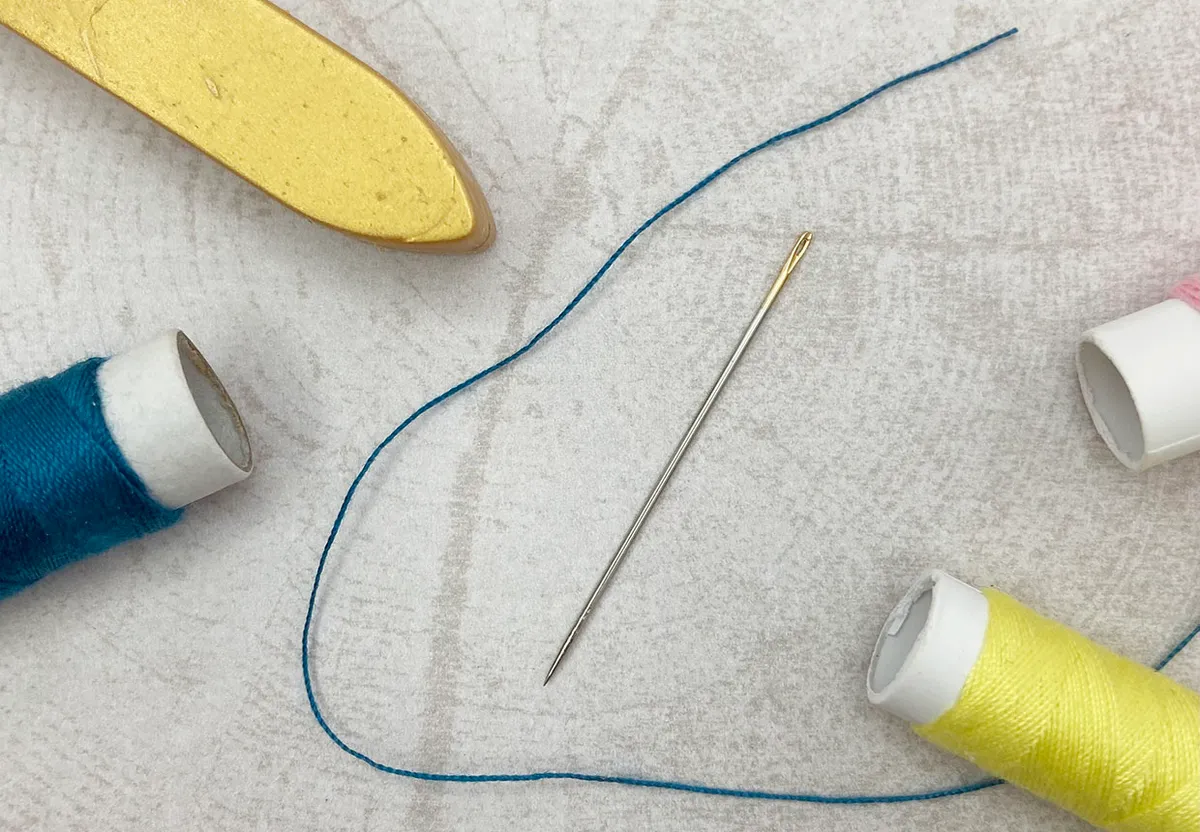
Use tweezers
A good quality pair of craft or sewing tweezers with a slanted ends and a decent grip are ideal for helping the end of the thread slip through the eye of the needle. Regular beauty tweezers may also be used as long as they’re slanted. Simply grip the thread near the end, then guide the thread through the eye.

Use a hands-free illuminated magnifier
A light-up magnifier with a neck cord is ideal to help your see the needle more clearly and also leaves you with both hands for threading. These can be picked up cheaply from most arts and crafts stores.
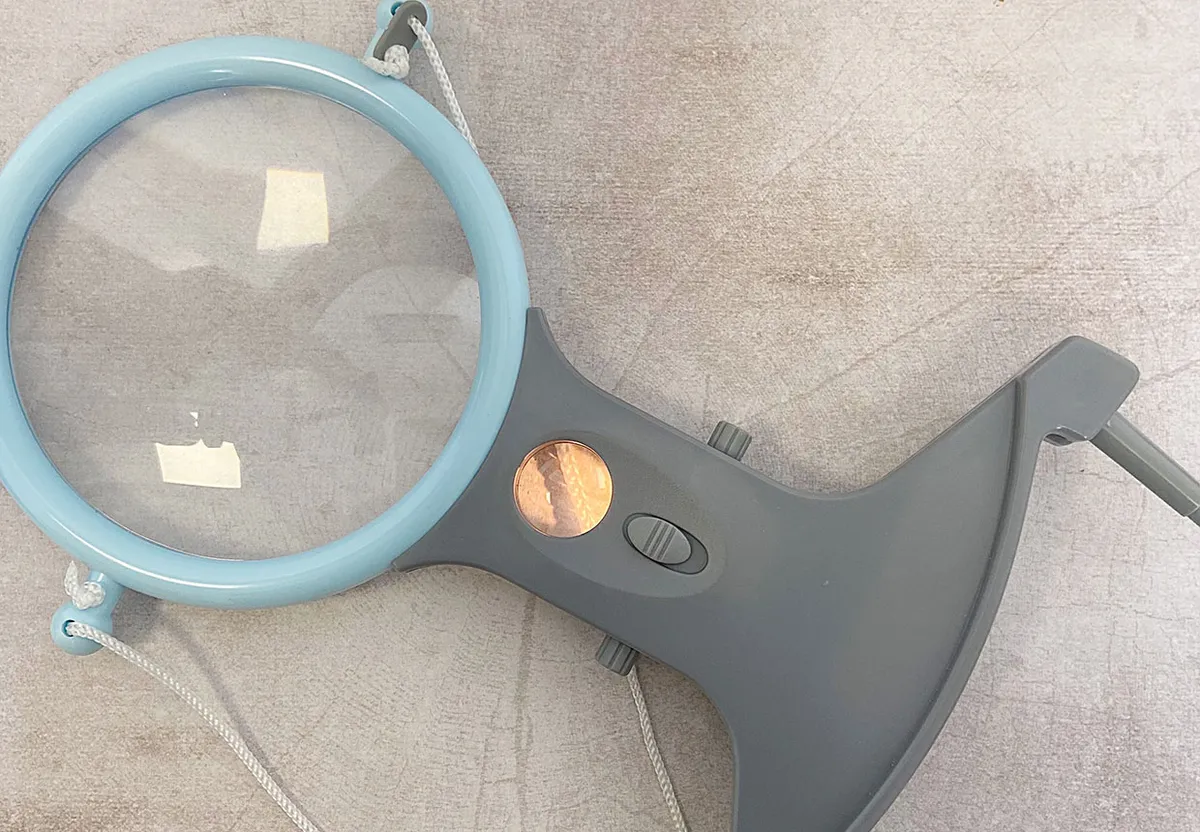
The pinch the tip method
This method stops the thread moving about and becoming flimsy. Pinch the end of the thread between your thumb and index finger so only the very tip of the thread is visible. With your other hand push the eye of the needle over the thread, then remove your finger and thumb and the needle should be threaded. You can also use this method with a sewing machine needle but pinch the thread then bring the end of the thread to the needle rather than the other way around.
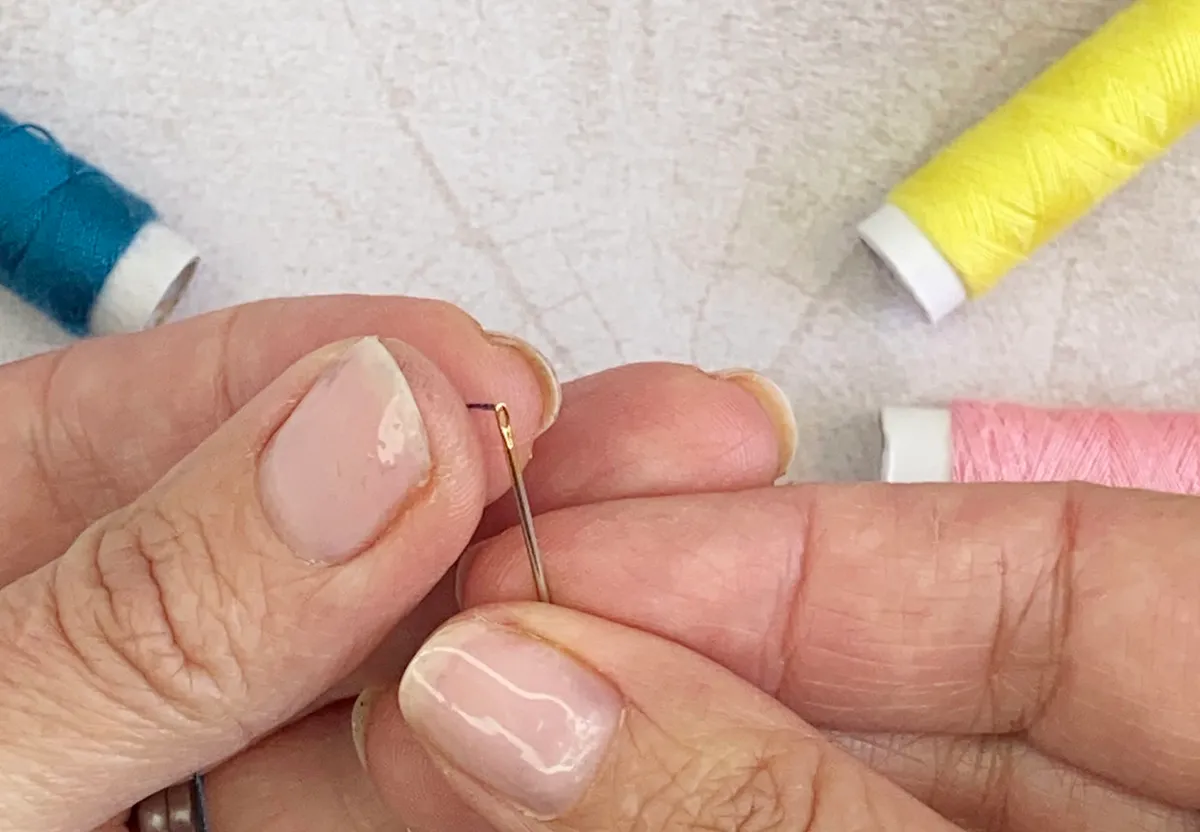
Use a needle threader
If you're still struggling to thread a needle by hand then you may find it easier if you use a needle threader. Check out our how to use a needle threader guide to learn more.
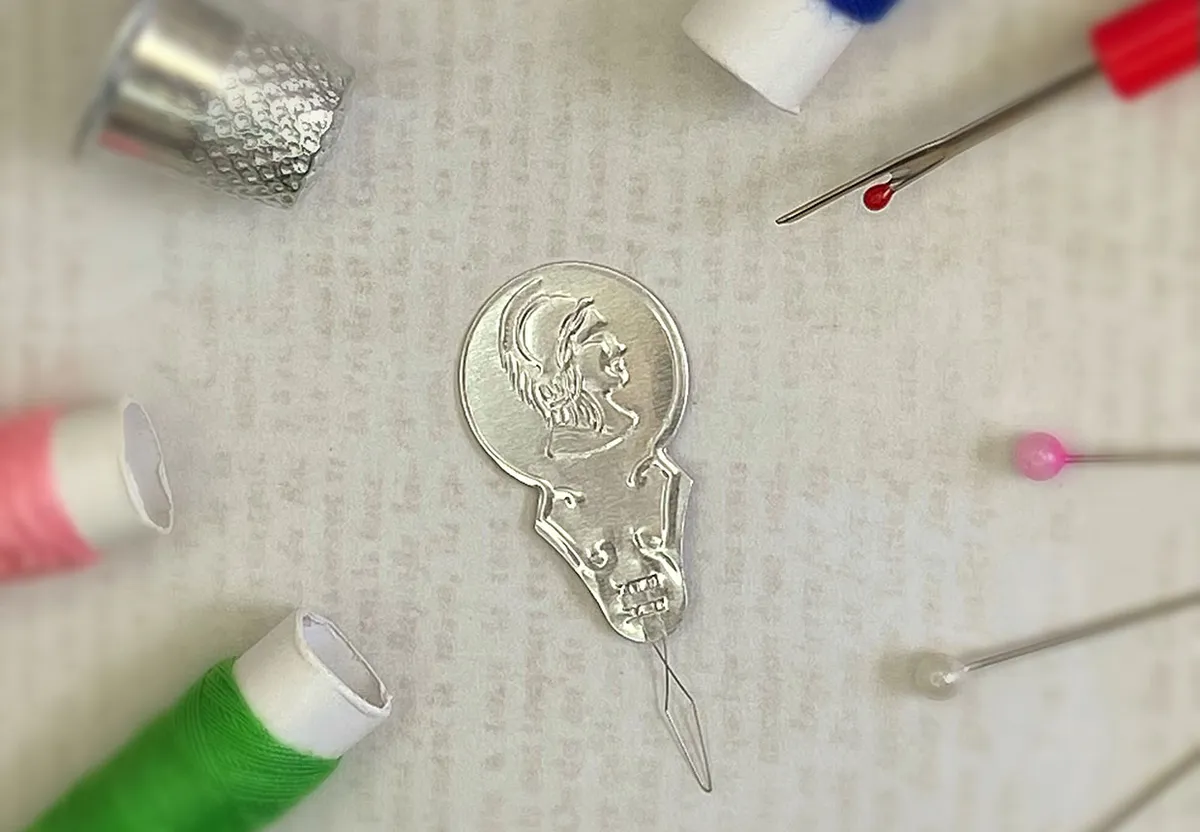
Featured image by Suzy Hazelwood on Pexels.


